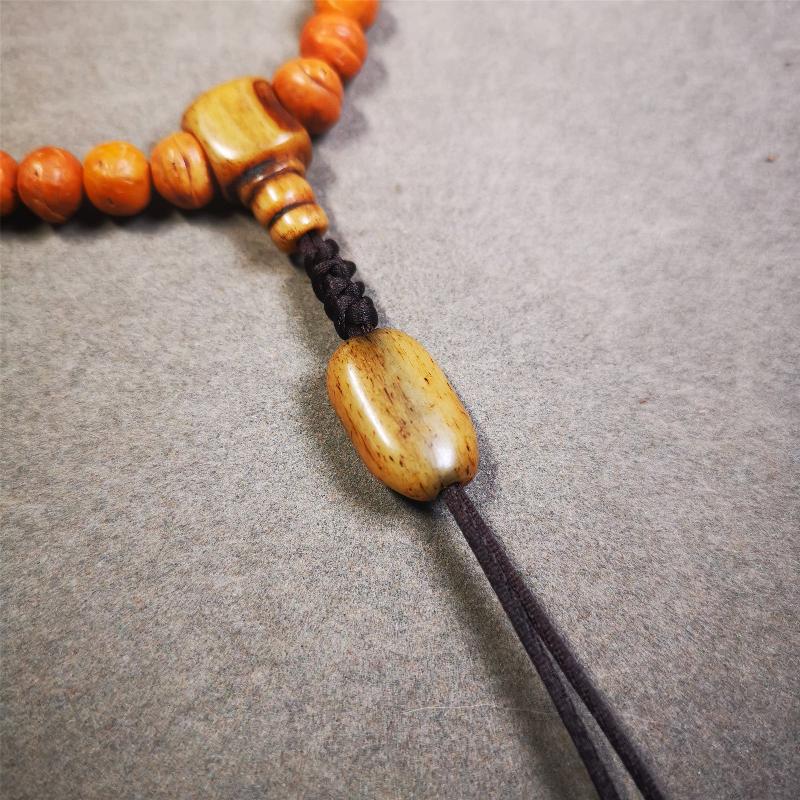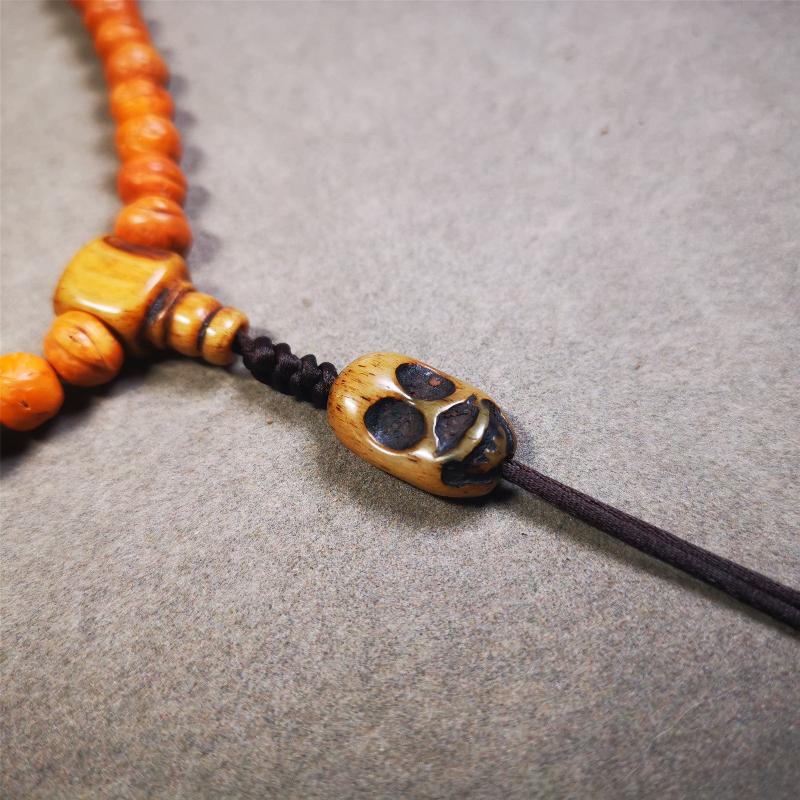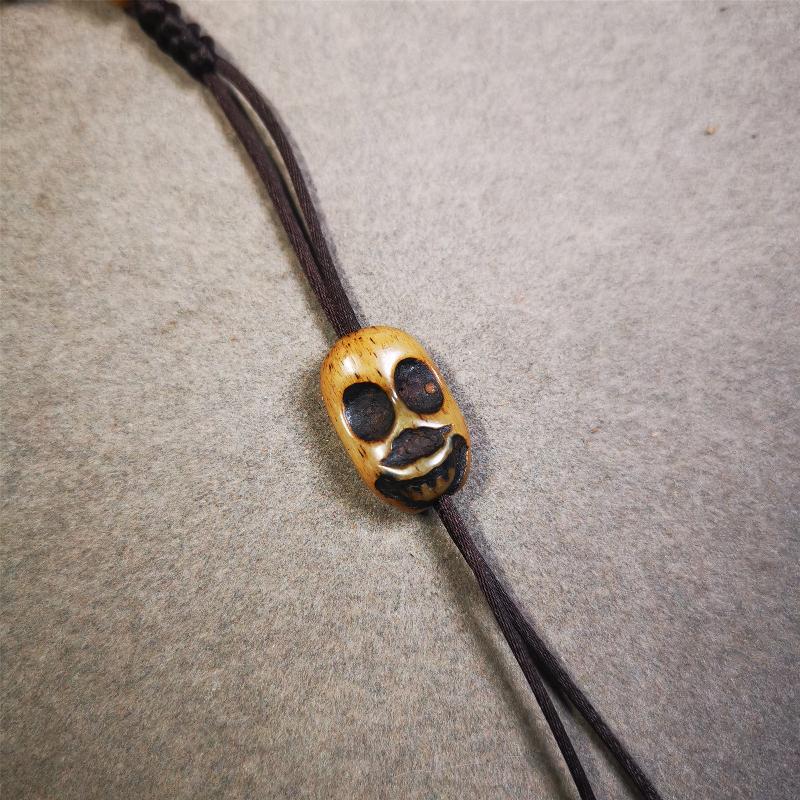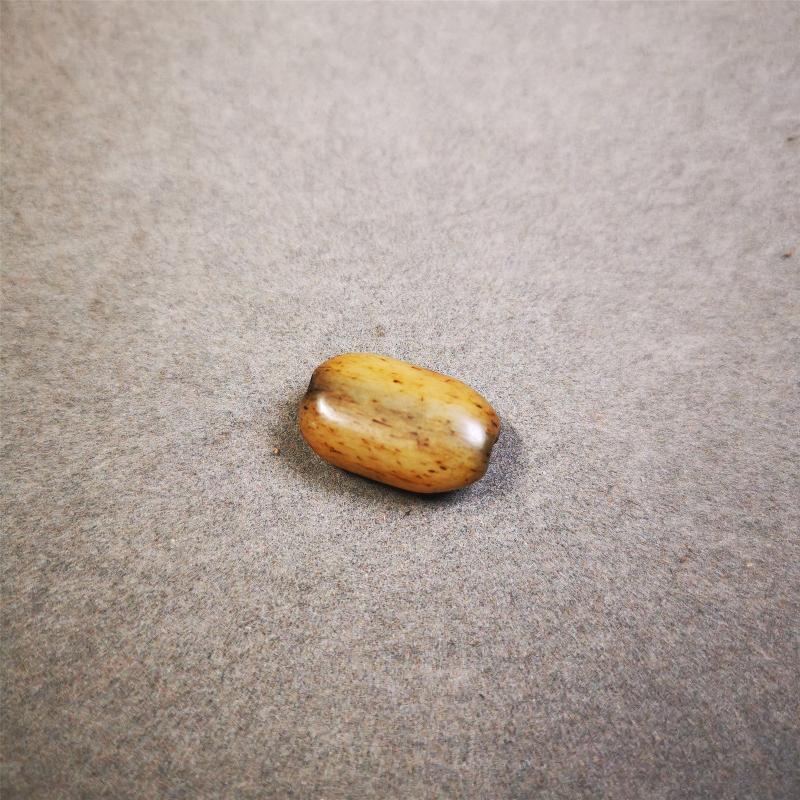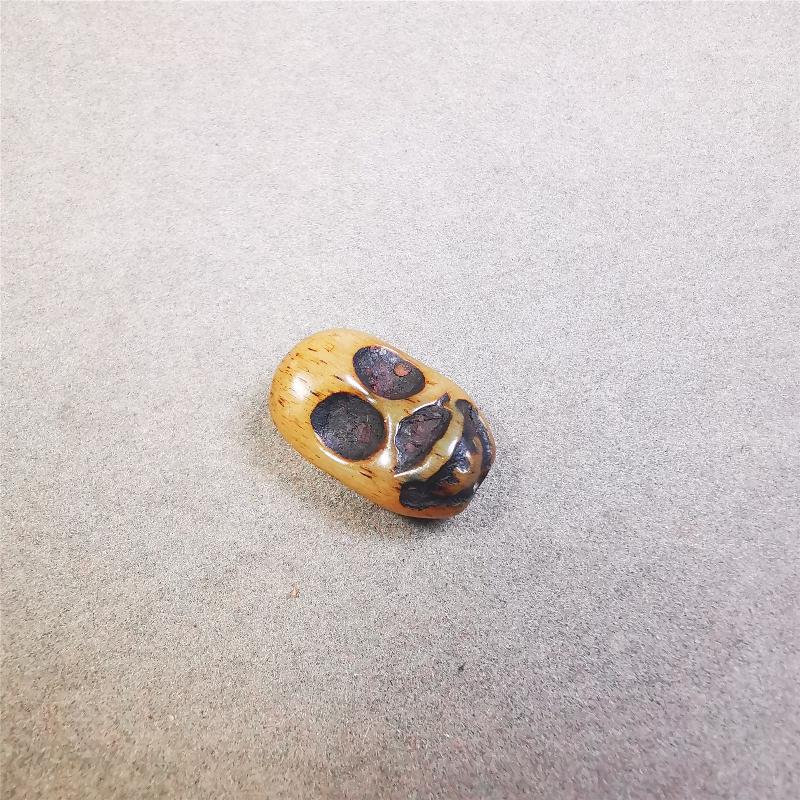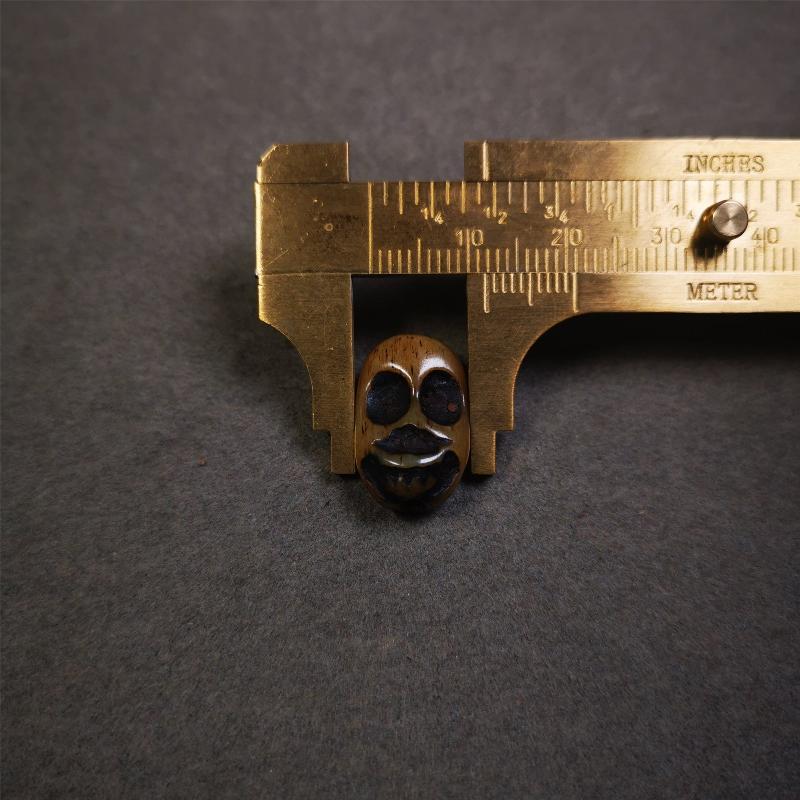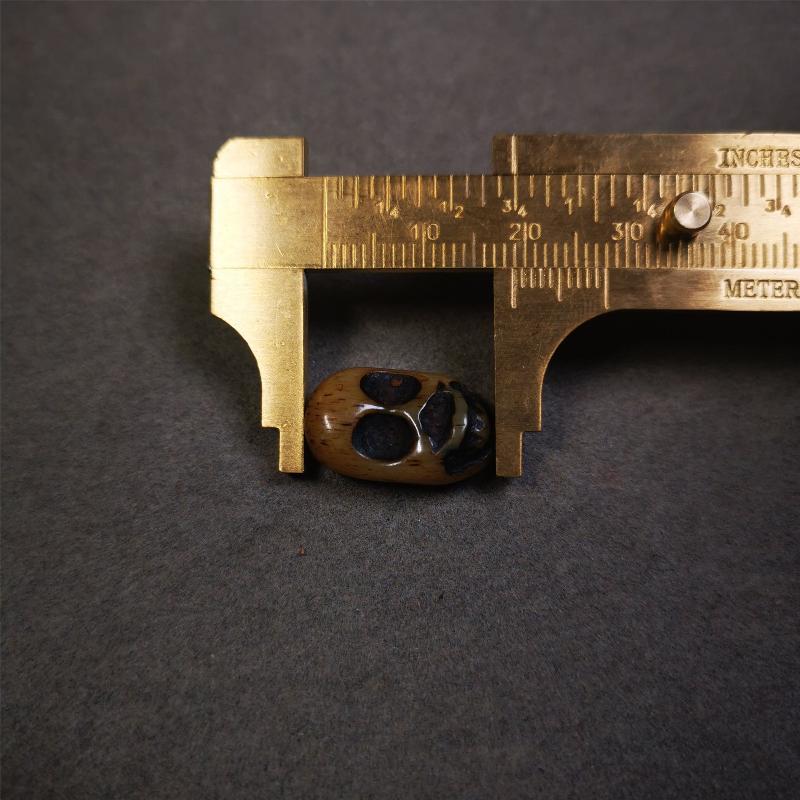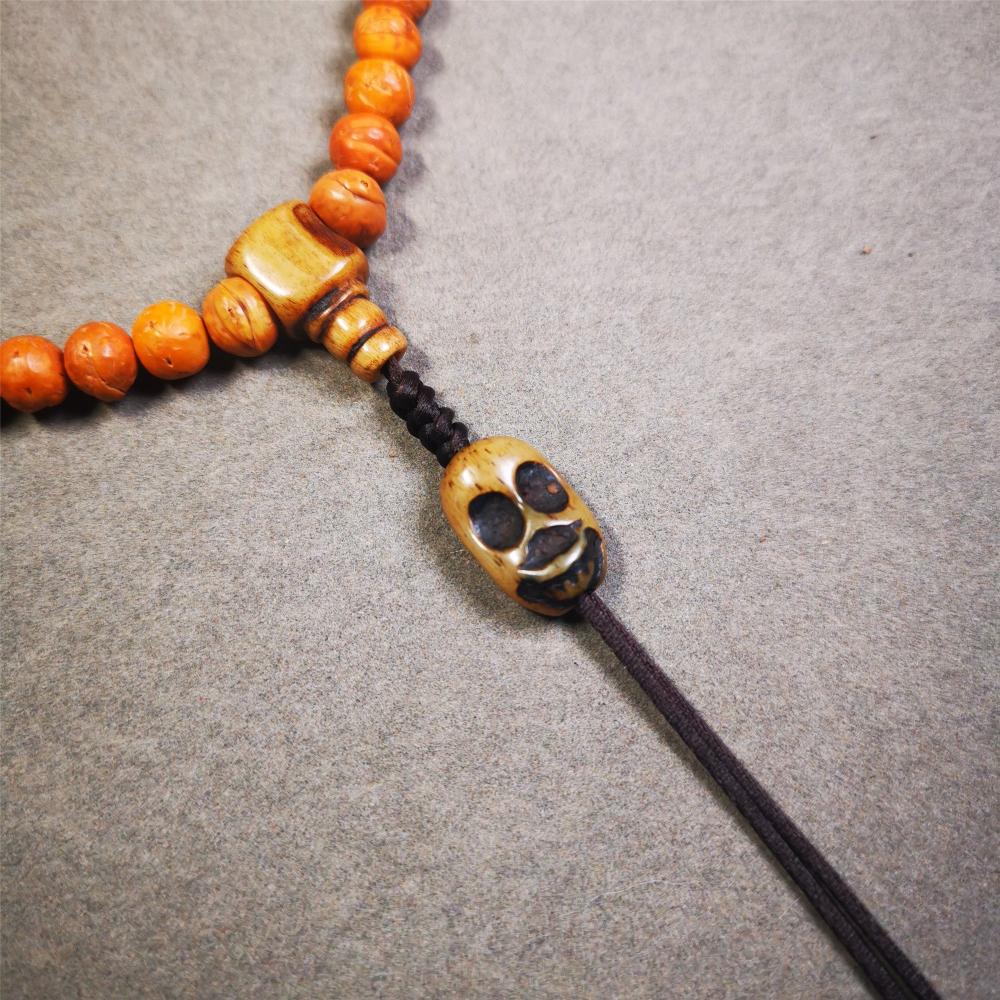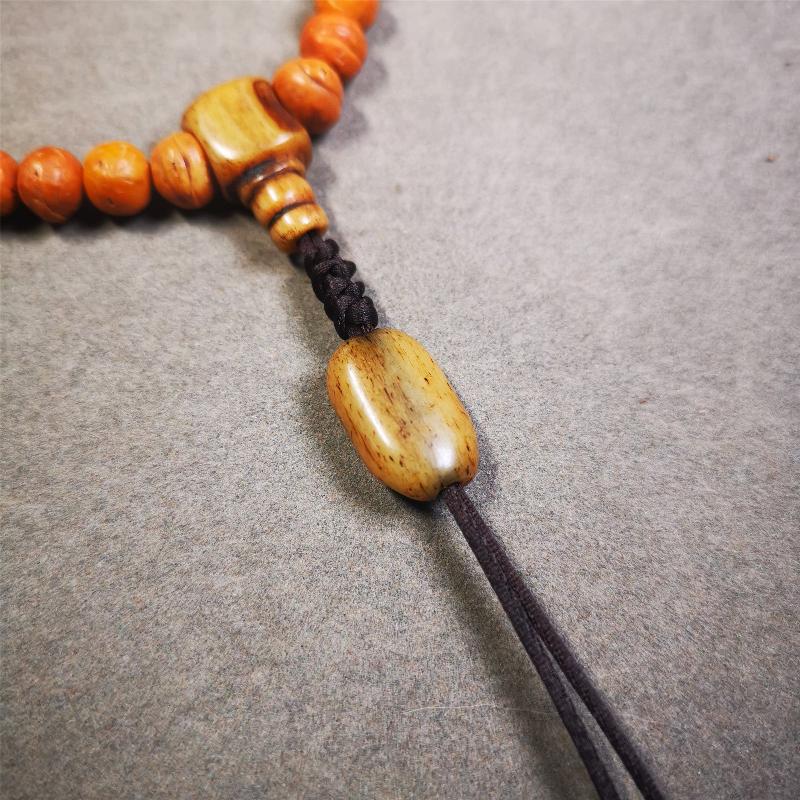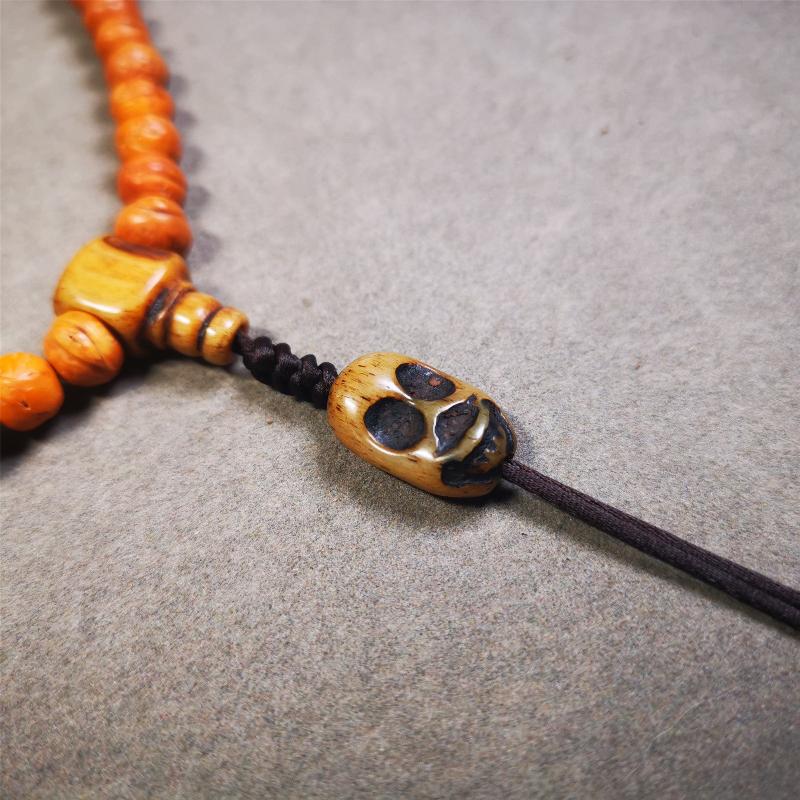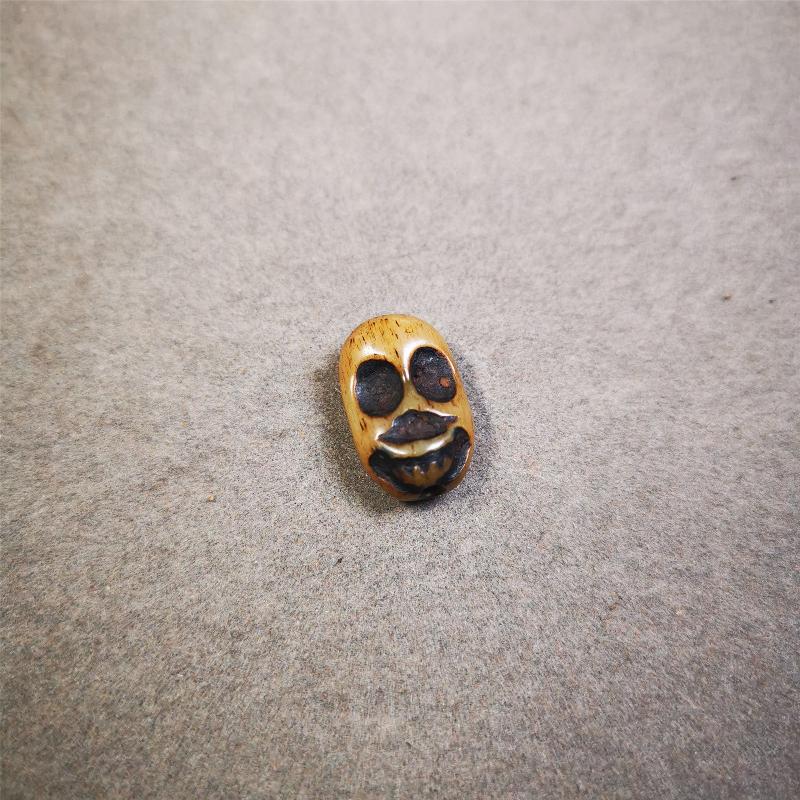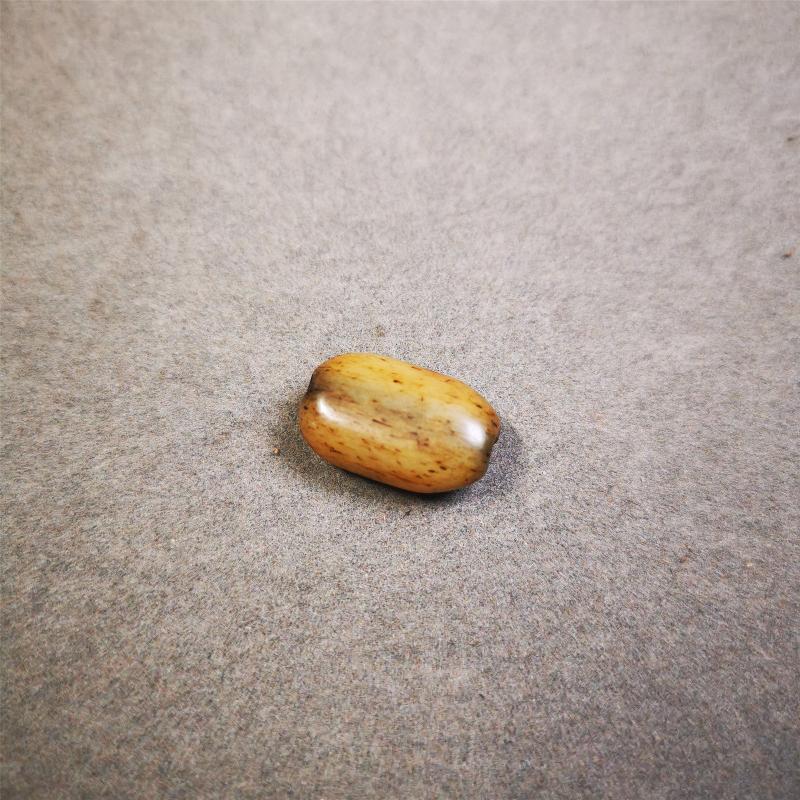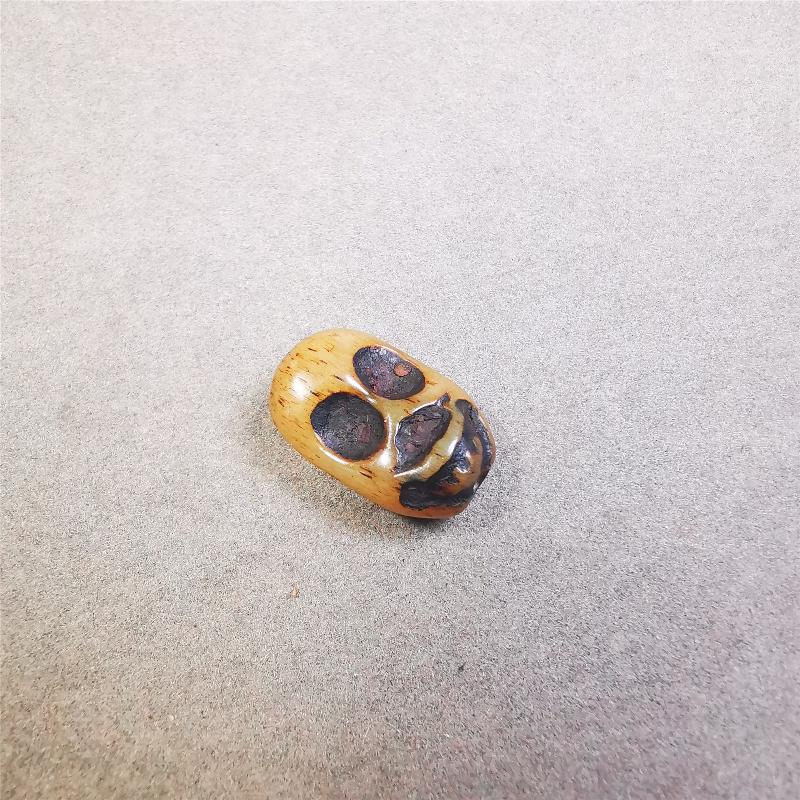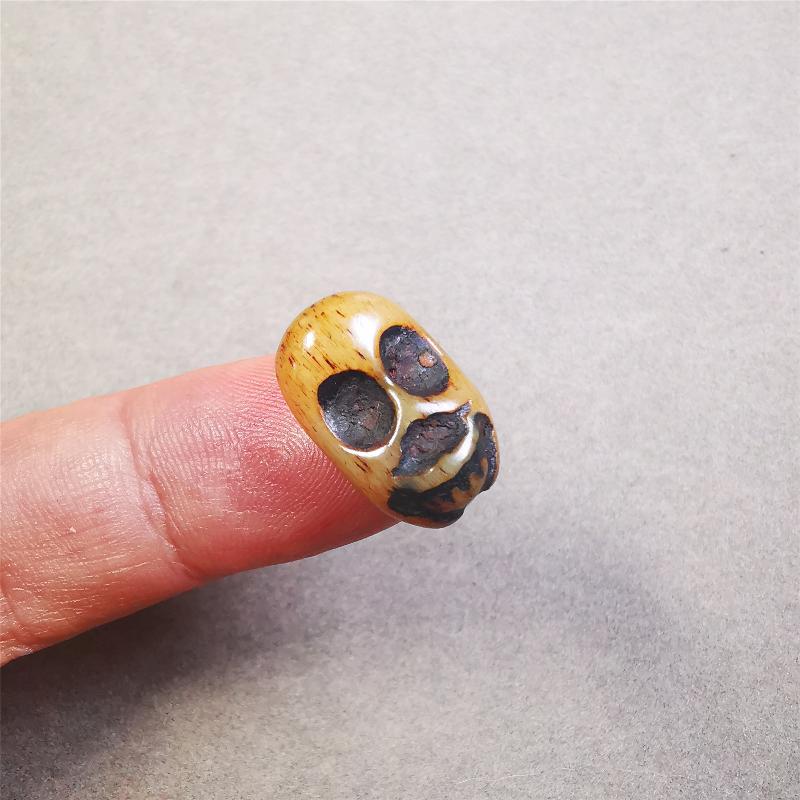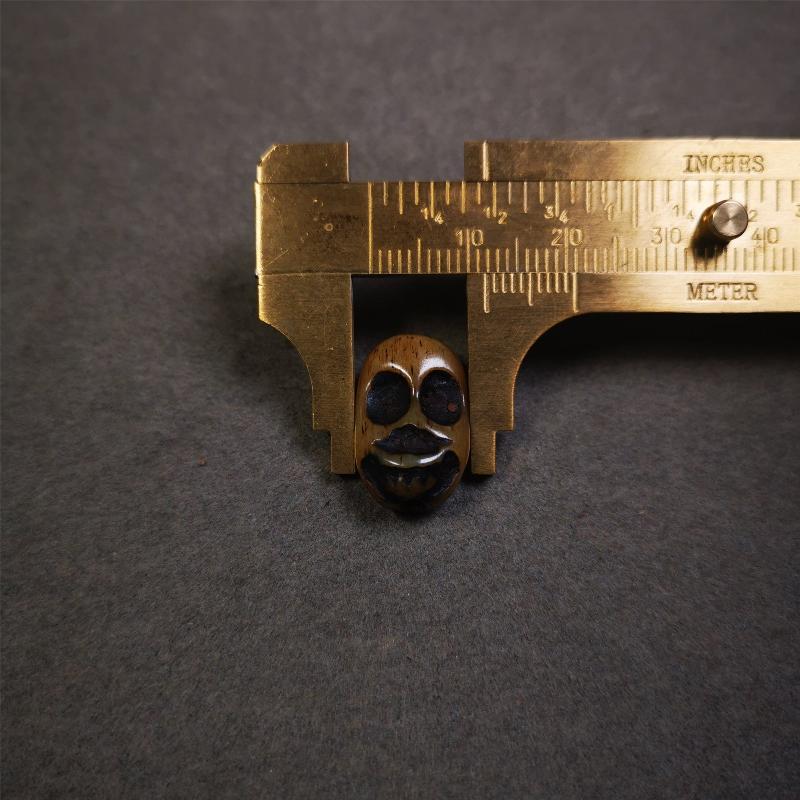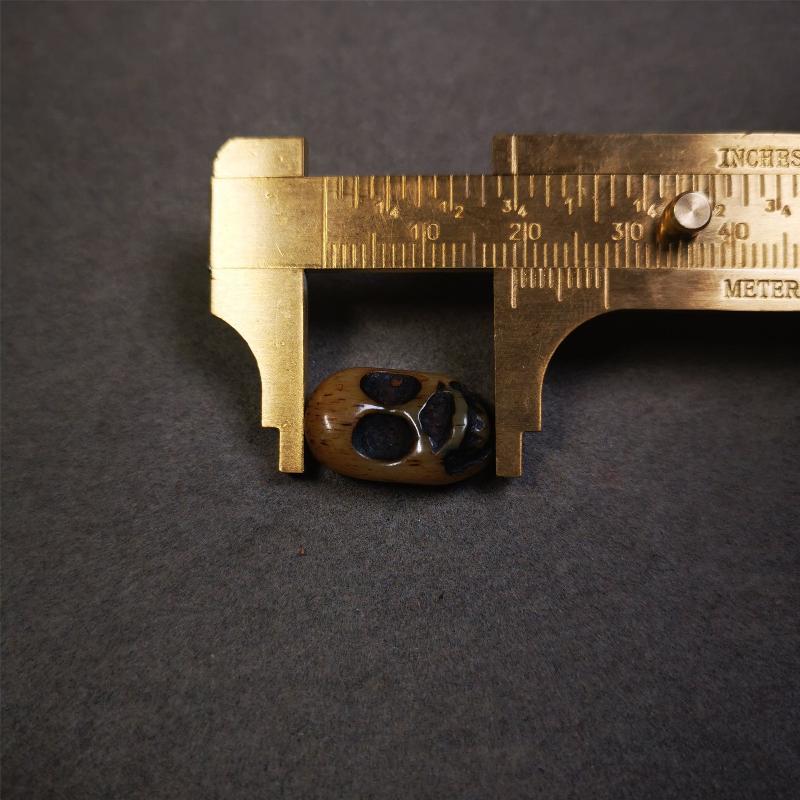Skull Citipati Bead Pendant 0.8"
Skull Citipati Bead Pendant 0.8"
⏱Vintage: 1990s
☞Handmade: 100%
⚒Materials: Yak Bone
☲Size: 0.8" × 0.47"
Couldn't load pickup availability
❤This unique bone carved Skull Sitavana pendant is made by Tibetan craftsmen in Hepo Township, Baiyu County, the birthplace of the famous Tibetan handicrafts.
You can use it as a spacer bead on mala,or pendant bead under guru bead.
Also can be use as pendant or keychain.
❤Details
Material:yak bone
SIZE:
Height:20mm / 0.8 inches
Width: 12mm / 0.47 inches
You'll get 1 * mala pendant as pictures shown.
❤About Spacer bead on Mala
Mala Beads are often used as a meditation tool,Spacer beads help you stay focused on counting your mantras and are usually placed at every 27th bead.
❤About smasana-adhipati
In Tibetan Buddhism, the corpse lord Jinliila is the incarnation and protector of Victory Vajra and Vajra Yoga Dakinis, and is one of the nine protectors of the three roots of Nyingmapa (guru, dakini, and protector).
He governs the "Eight Great Cold Forests" where the corpse is abandoned and protects those who practice uncleanness in the corpse forest. According to legend, the Eight Great Cold Forests are the places where the lotus born to form the eight great Heruka deities, namely the tyrannical cold forest in the east and the cold cold in the north. Forest, the West King Kong Flame Cold Forest, the South Bone Lock Cold Forest, the Northeast Crazy Laughing Cold Forest, the Southeast Auspicious Cold Forest, the Southwest Dark Forest, and the Northwest Chirp Cold Forest.
The Tibetan Buddhist Tripitaka Tantra records that the corpse forest master lives in the corpse city of skeletons. There is a corpse forest skull palace and a lotus flower sun wheel seat in the city. The corpse forest owner and his wife stand hugging and standing on the seat cushion. The corpse lord in the thangka is usually shown as two white skeletons standing in an embrace, with five skull crowns (that is, five small skulls) on top of their heads, in the midst of raging flames of prajna, waving bone rods, aquariums, etc.; using skulls to express impermanence Emptiness, the horrific appearance of the skull destroys hatred.

